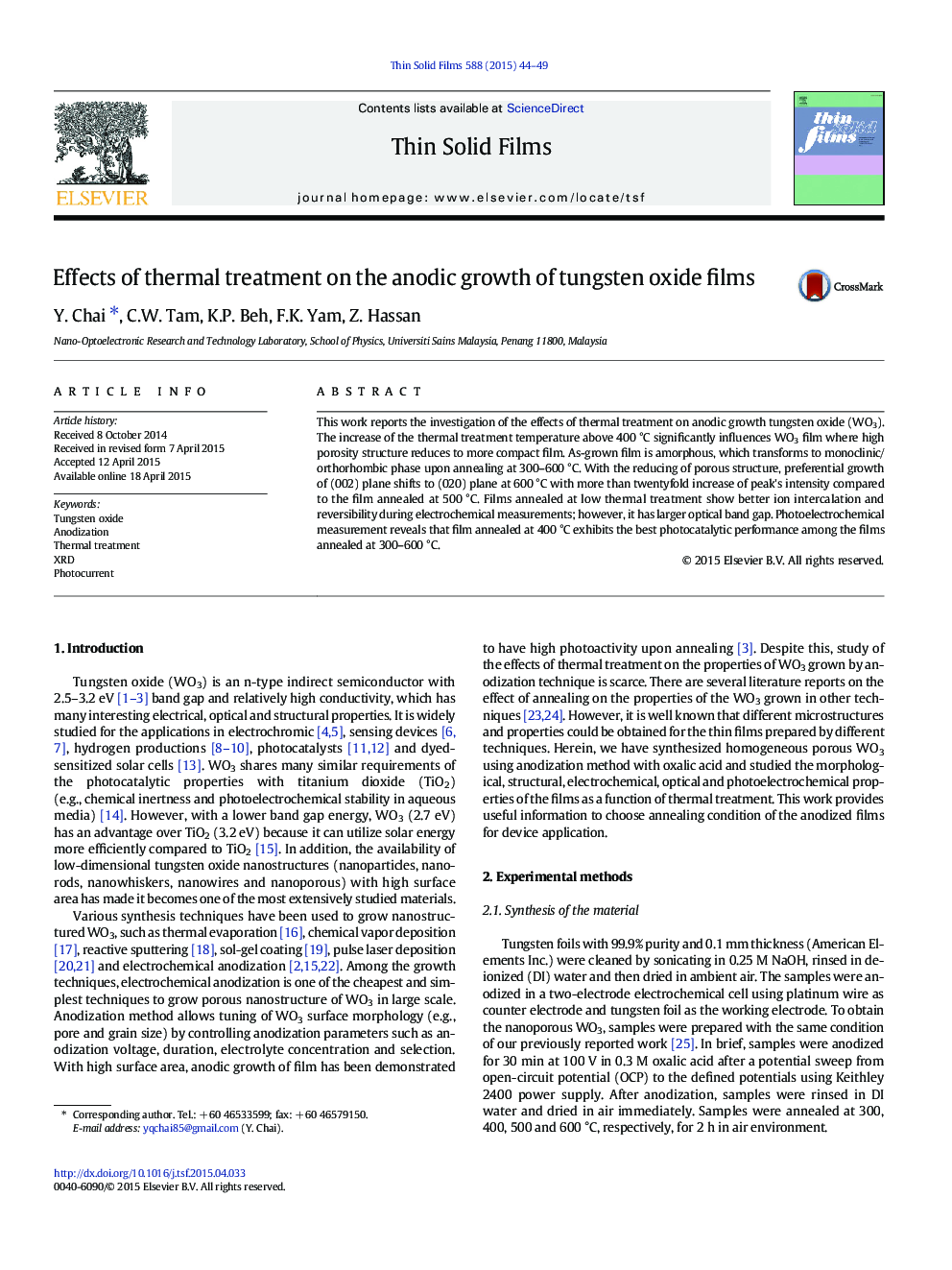| Article ID | Journal | Published Year | Pages | File Type |
|---|---|---|---|---|
| 1664736 | Thin Solid Films | 2015 | 6 Pages |
•Porosity of the WO3 reduces as annealing temperature increases above 400 °C.•As-grown film is amorphous which transforms to monoclinic/orthorhombic upon annealing.•As-grown film shows better ion intercalation in electrochemical process.•Optical band gap of WO3 reduces as the annealing temperature increases.•Film annealed at 400 °C exhibits best photocatalytic performance.
This work reports the investigation of the effects of thermal treatment on anodic growth tungsten oxide (WO3). The increase of the thermal treatment temperature above 400 °C significantly influences WO3 film where high porosity structure reduces to more compact film. As-grown film is amorphous, which transforms to monoclinic/orthorhombic phase upon annealing at 300–600 °C. With the reducing of porous structure, preferential growth of (002) plane shifts to (020) plane at 600 °C with more than twentyfold increase of peak's intensity compared to the film annealed at 500 °C. Films annealed at low thermal treatment show better ion intercalation and reversibility during electrochemical measurements; however, it has larger optical band gap. Photoelectrochemical measurement reveals that film annealed at 400 °C exhibits the best photocatalytic performance among the films annealed at 300–600 °C.
